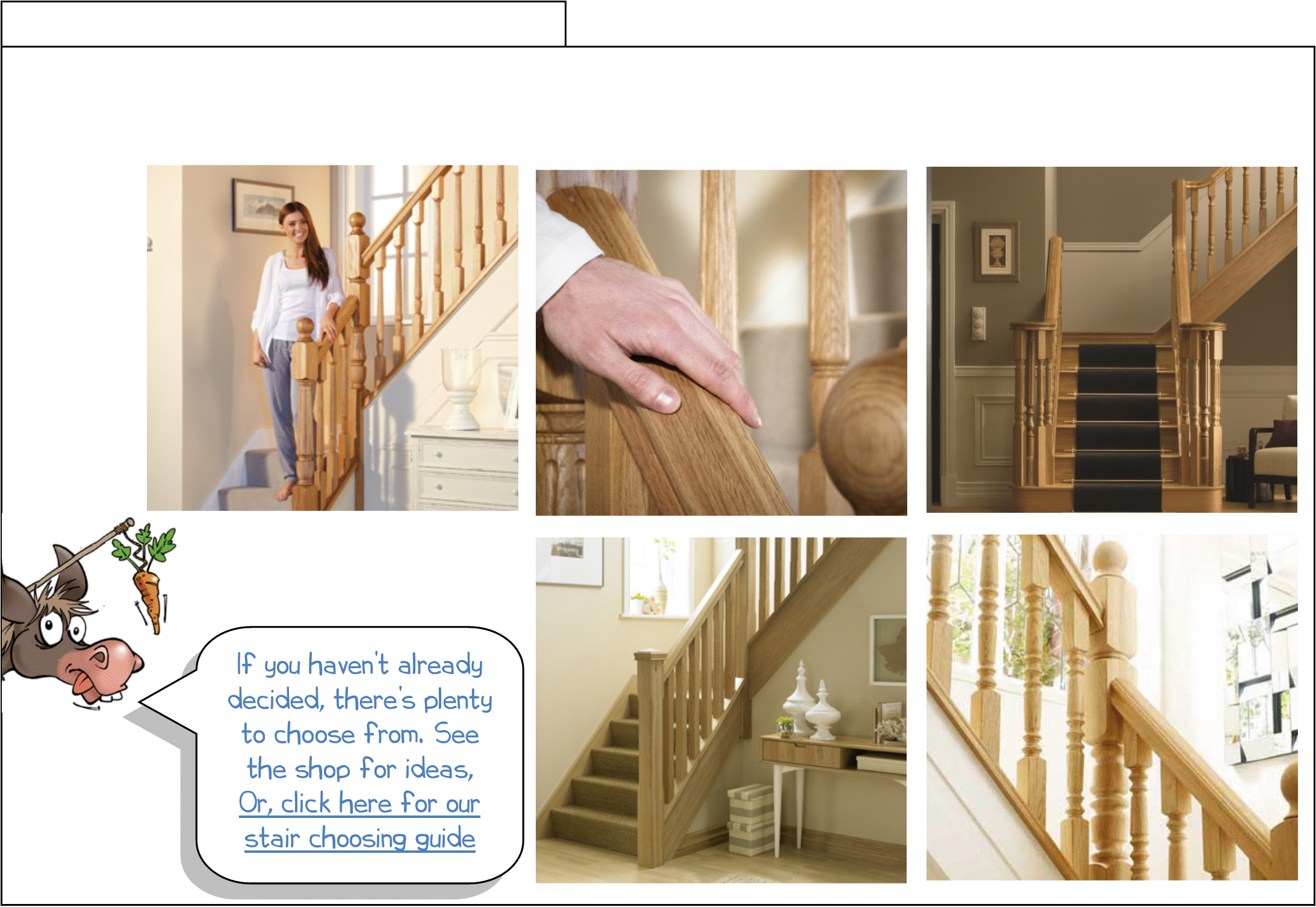
Step 1 - Decide the look you want
With Heritage you can choose the style and look of your stairs by selecting and matching spindles, newel posts and newel caps, all available in solid white oak.
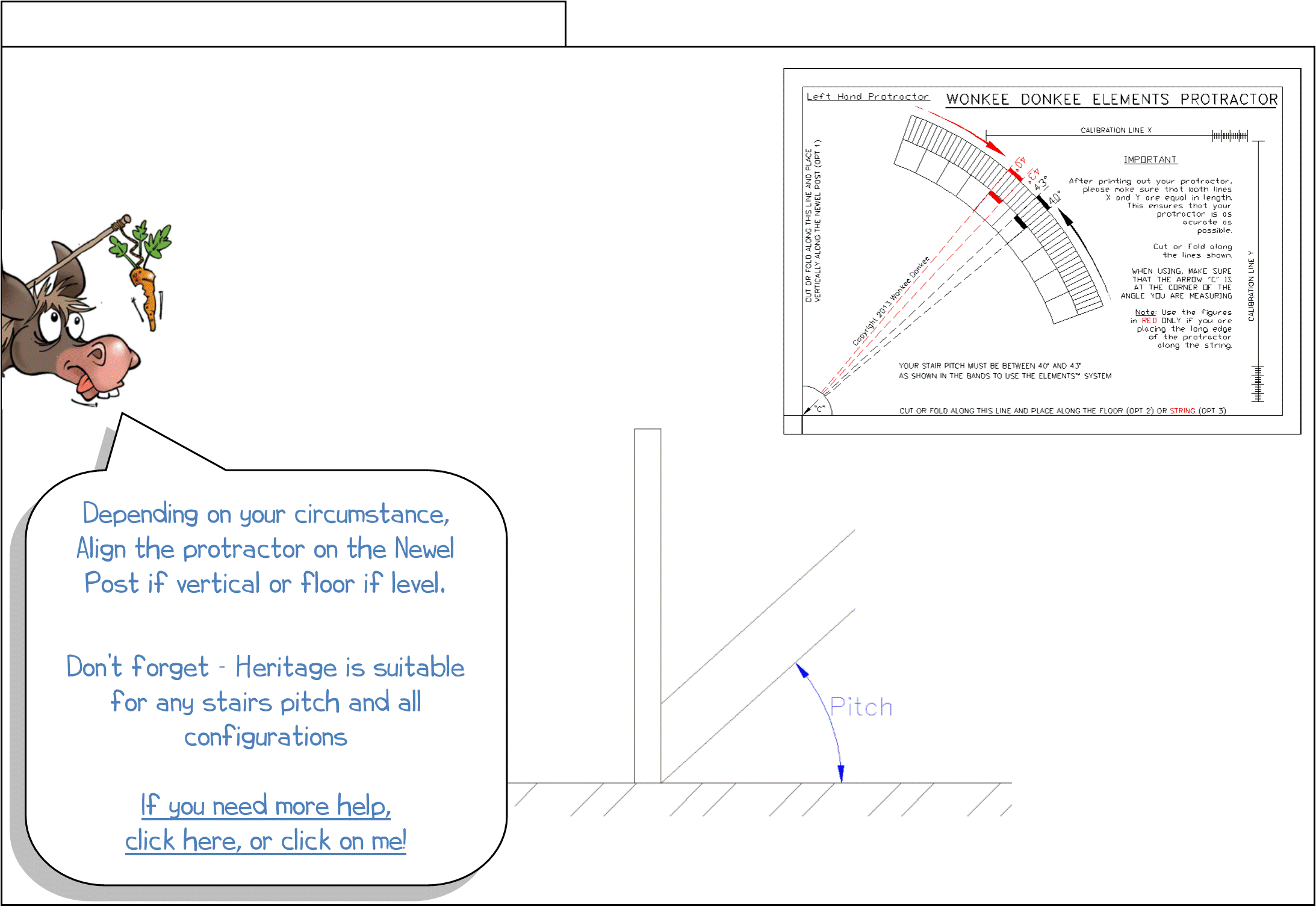
Step 3 - Measuring stair pitch
Measure the pitch (angle) of your stairs.
You may use the printable protractor to do this, or any other accurate method of measuring your stair pitch - otherwise your calculations may not be correct .
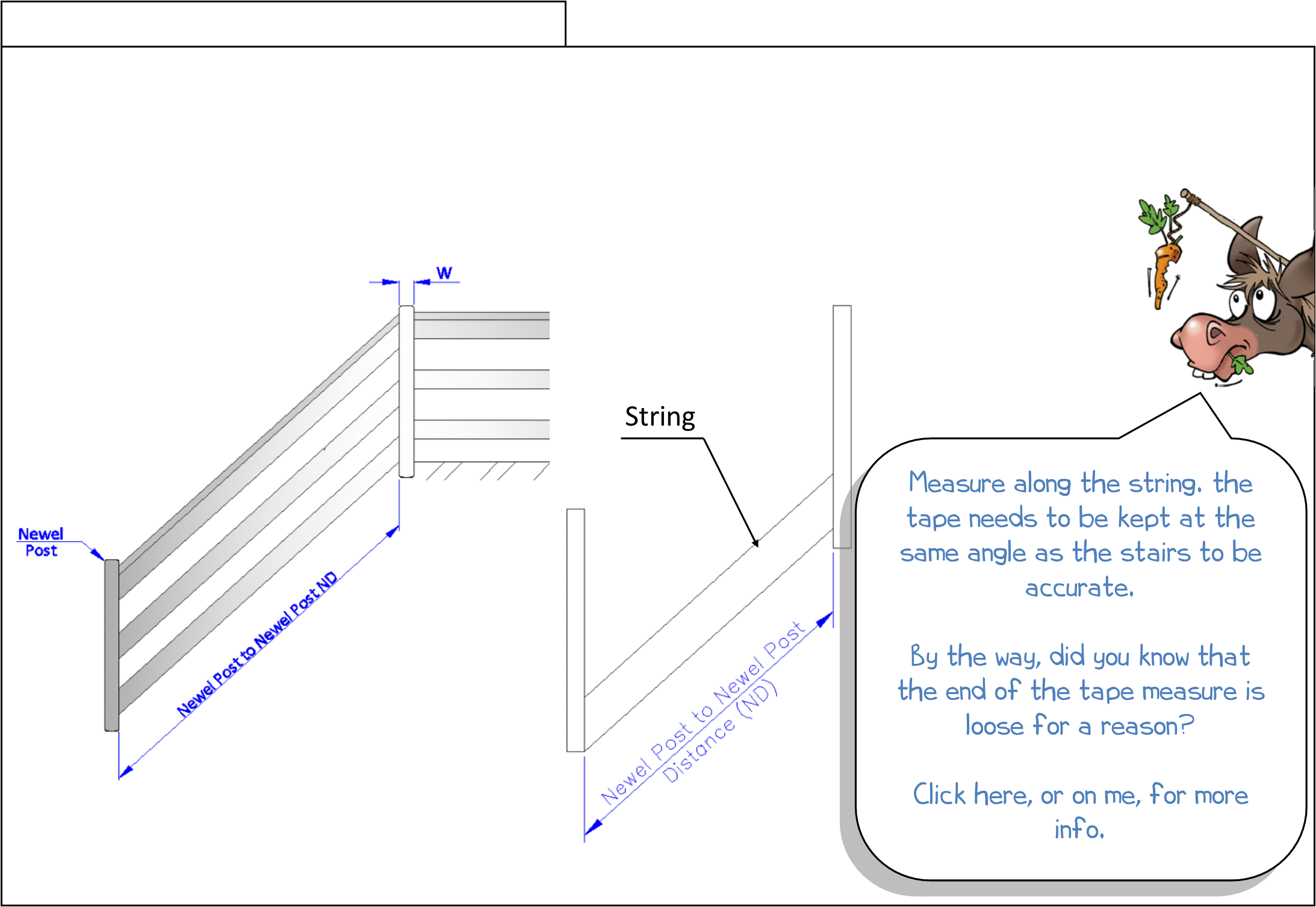
Step 4 - Measure newel distance
Measure the distance between the newel post inside faces (ND). Enter this into the Wonkee Donkee calculator along with the stair pitch. This will give you the quantity of spindles and their spacing.
Note: Be aware of errors that can creep in when measuring the newel distance with a tape measure, particularly when measuring right into an angled corner. See next step.
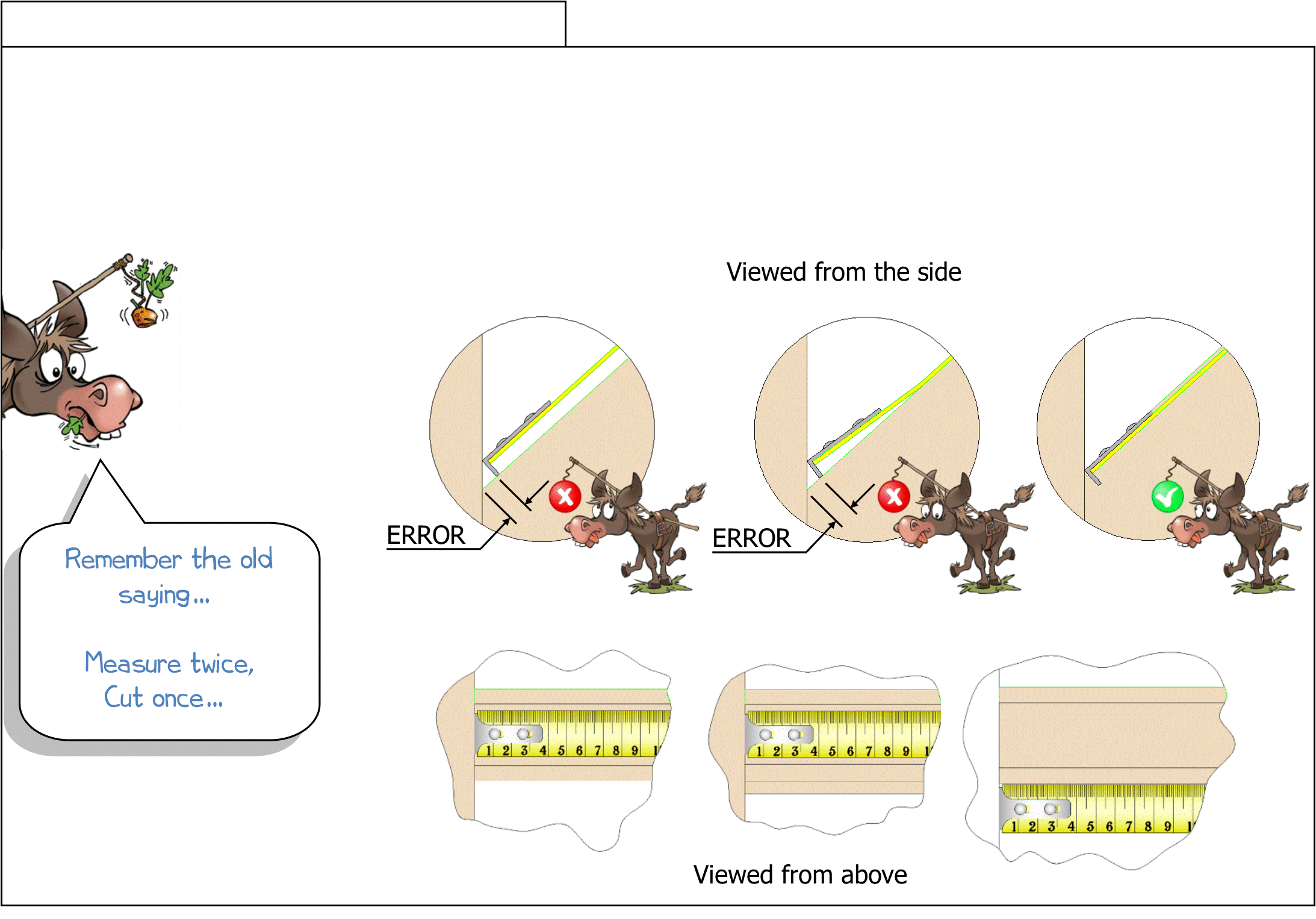
Step 5 - Using the tape measure
The joint between the newel and the string is a tight angled corner resulting in the tape measure not getting right into the corner resulting in an error that could easily be as much as 15mm (the height of the tab), and incorrectly spaced spindles.
Make sure that you measure from the Newel base and that the tape measure is flush with the top of the baserail otherwise the tab on the end of the tape measure will lift the tape off the baserail and cause errors in your marking out.
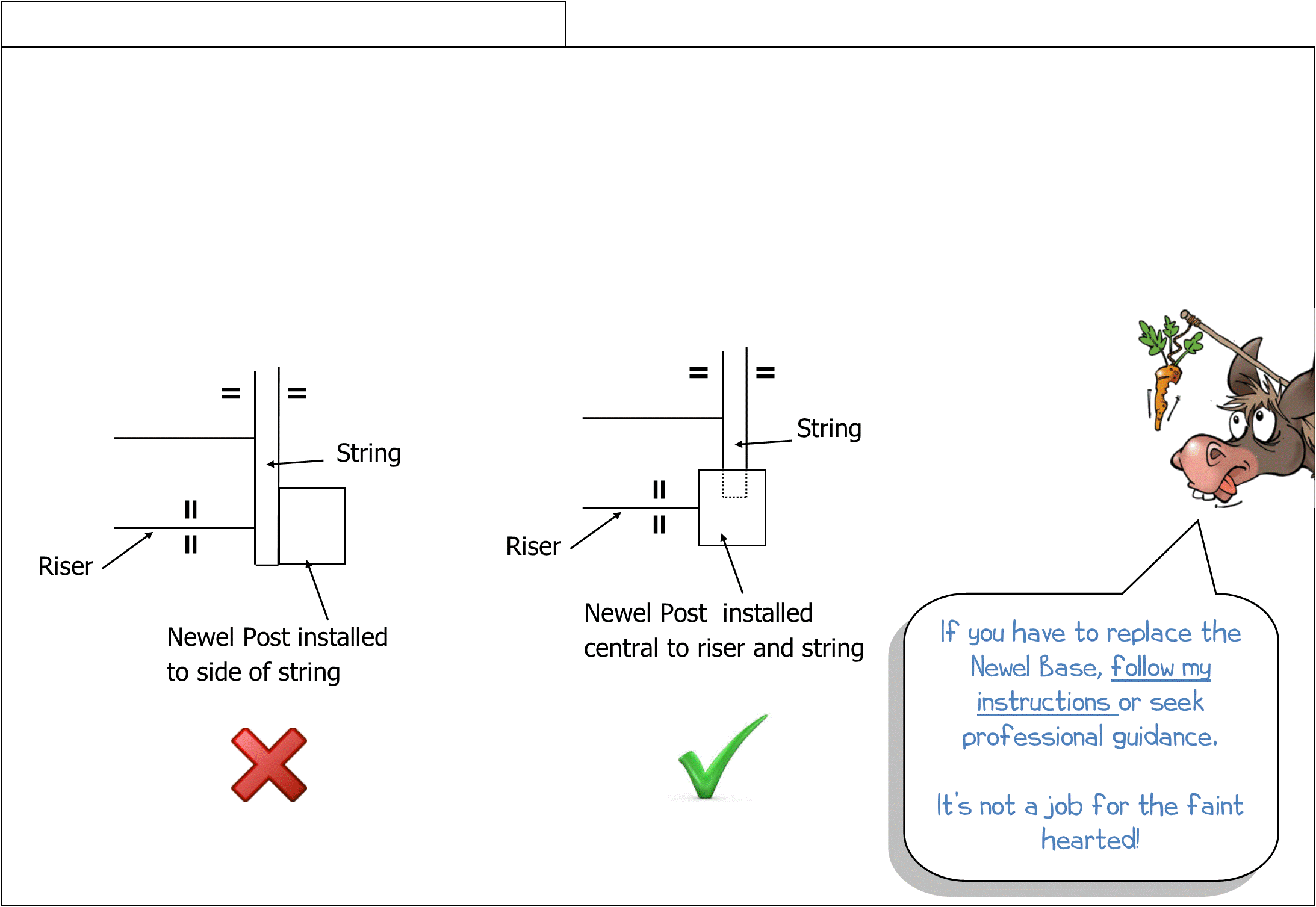
Step 6 - Check newel position
Before you begin, the newel post must be installed central to the riser and string.
If it is installed to the side of the string, then the newel will need removing and a new newel base installed.
IMPORTANT:
Check that the newel is non-supporting and non-structural before removing. If in doubt, seek professional advice!
Fit new newel bases to the heights shown in the following steps. Click here for newel base fitting instructions.
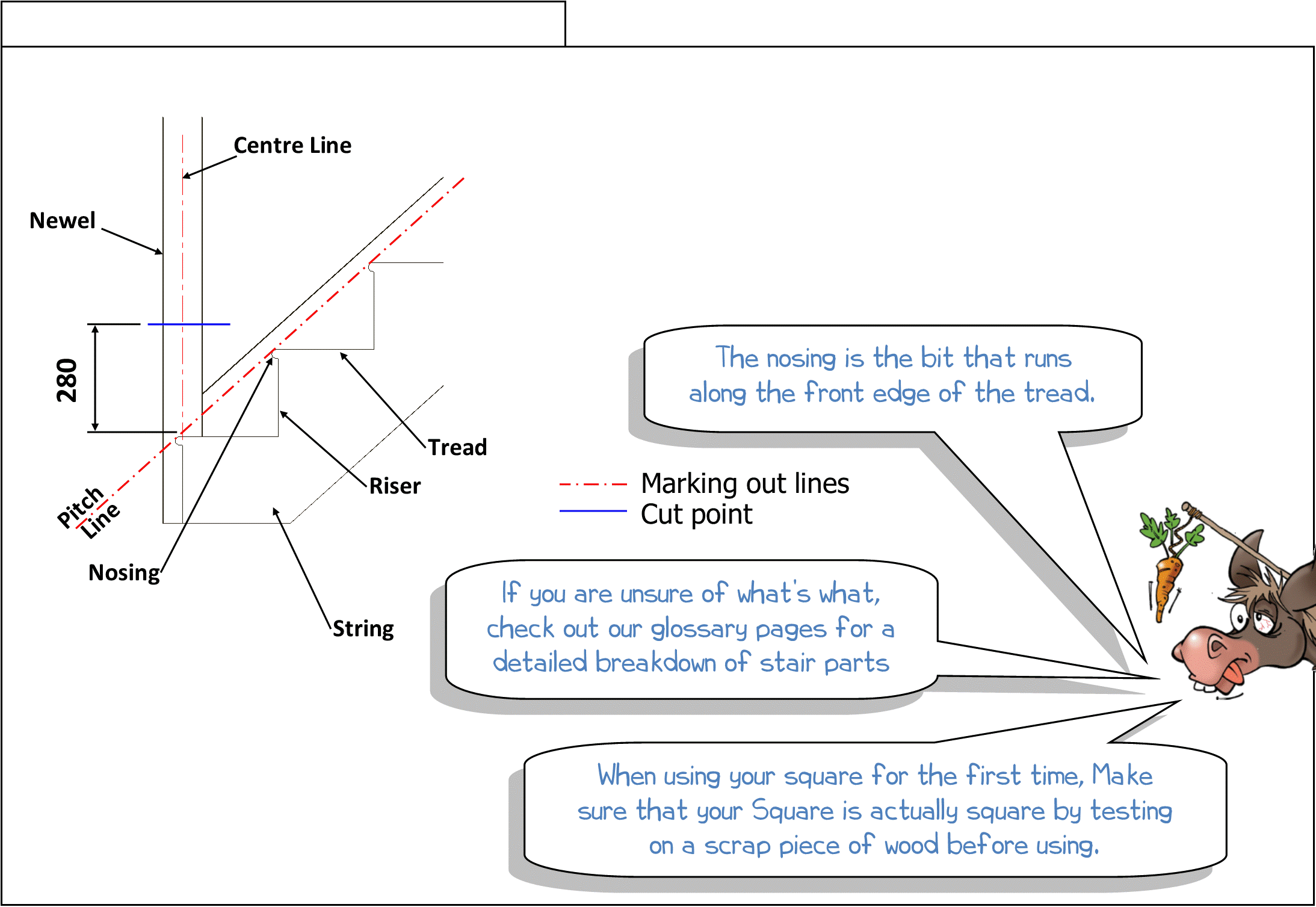
Step 7 - Mark bottom newel
Place a straight edge over the nosing of at least three treads to find the pitch line, and mark this pitch line on the inside face of the existing newel. Mark a centre line to intersect the pitch line mark.
Measure 280mm up from these intersecting lines and, using a square, mark a line showing where to cut the newel. Continue this line all the way around the newel post again using the square.
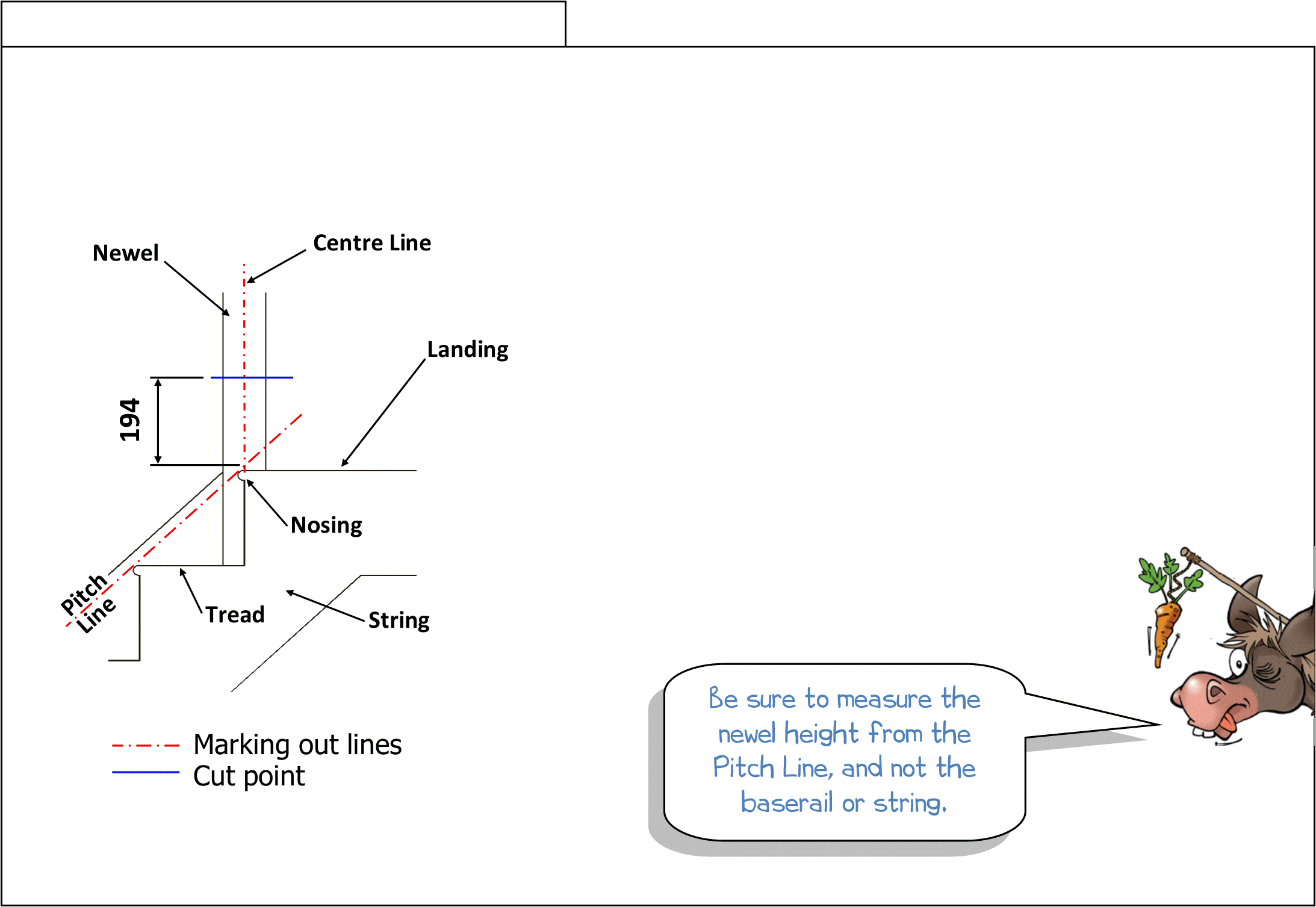
Step 8 - Mark top newel
Now mark the top newel post, measuring up only 194mm this time from where your marks intersect.
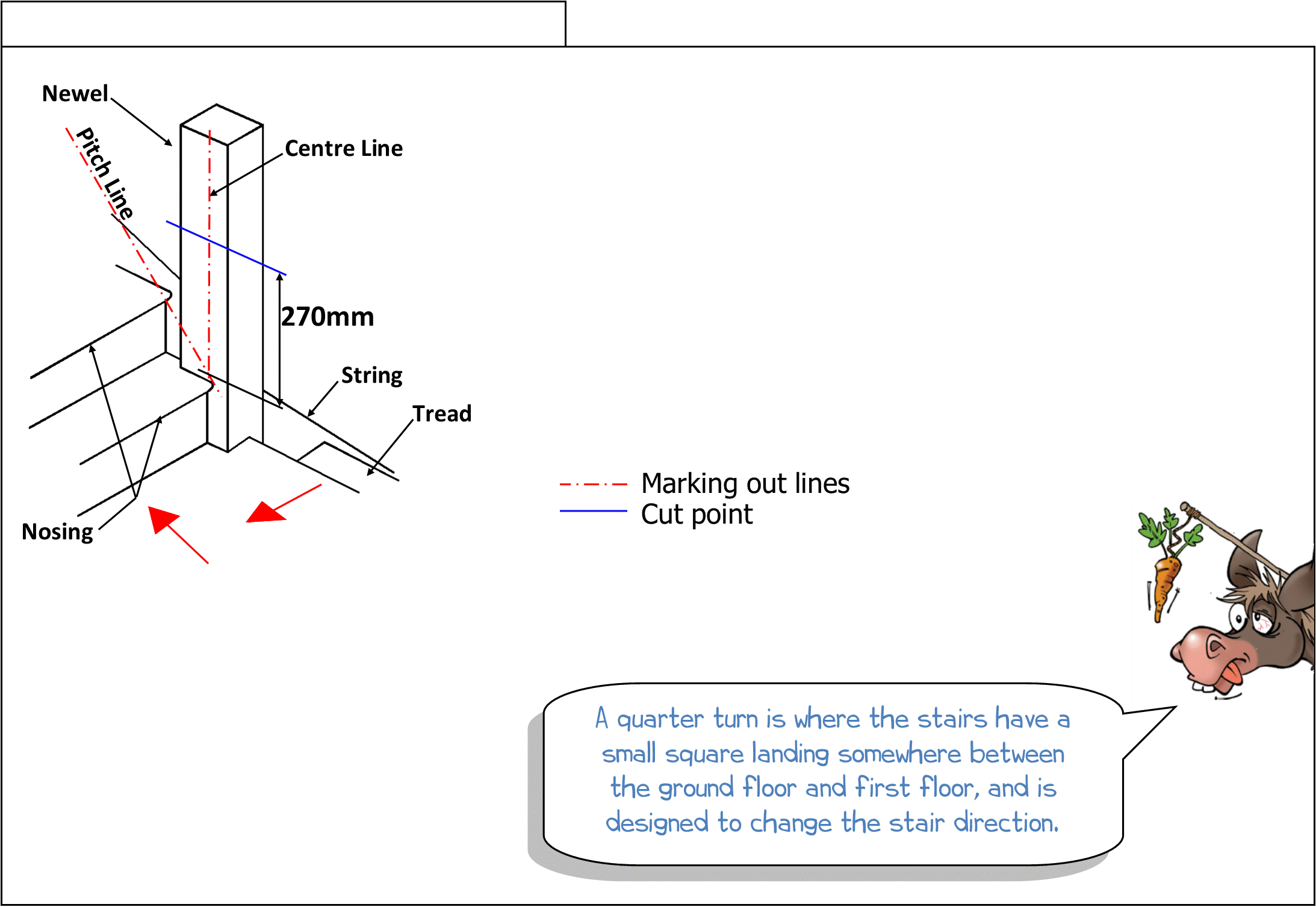
Step 9 - Mark quarter turn newel
If your stairs have a quarter turn, place a straight edge over the nosing of at least three treads to find the pitch line, marking this pitch line on the inside face of the quarter turn newel. Mark a centre line to intersect the pitch line mark.
Measure 270mm up from these intersecting lines and, using a square, mark a line all the way around the Newel Post showing where to cut the newel.
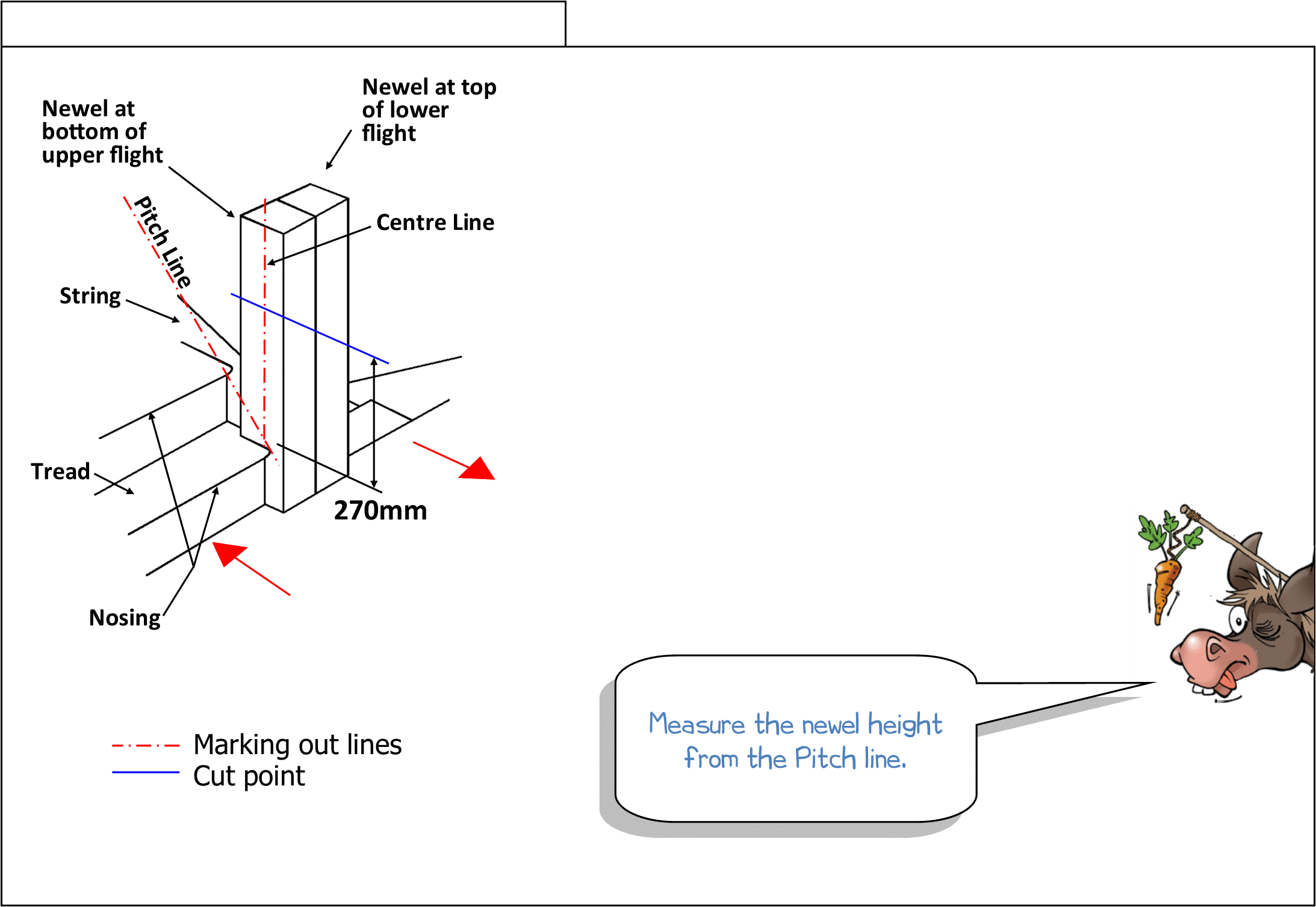
Step 10 - Mark half landing newel
For half landings, mark the newel post that sits at the bottom of the top flight (that is, the upper most of the pair of newels), measuring up 270mm from where the markings intersect.

Step 11 - Trim newels to height
Cut all newel posts to your marks using a fine-toothed handsaw. Ensure that the saw is kept level and straight at all times, taking care when breaking through to avoid splintering the timber.
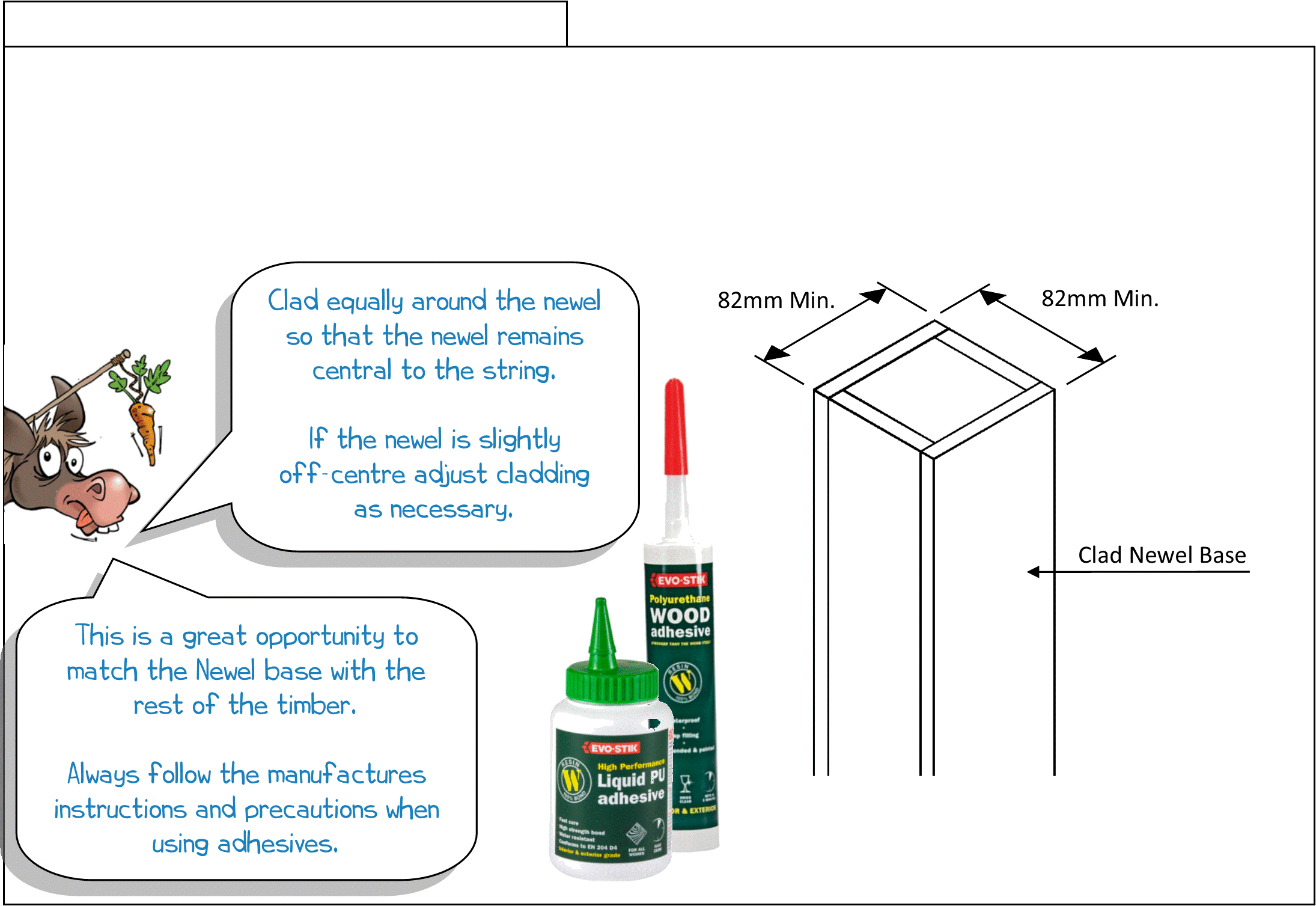
Step 12 - Measure newel width
Measure the width of your existing newel post - this should be no less than 82mm x 82mm square. If the newel base is less than this, it will need to be built up by cladding each side equally to get to the required size. Use adhesive and pins to fix in place, cladding the newel so that it ends flush with the top of the newel base.
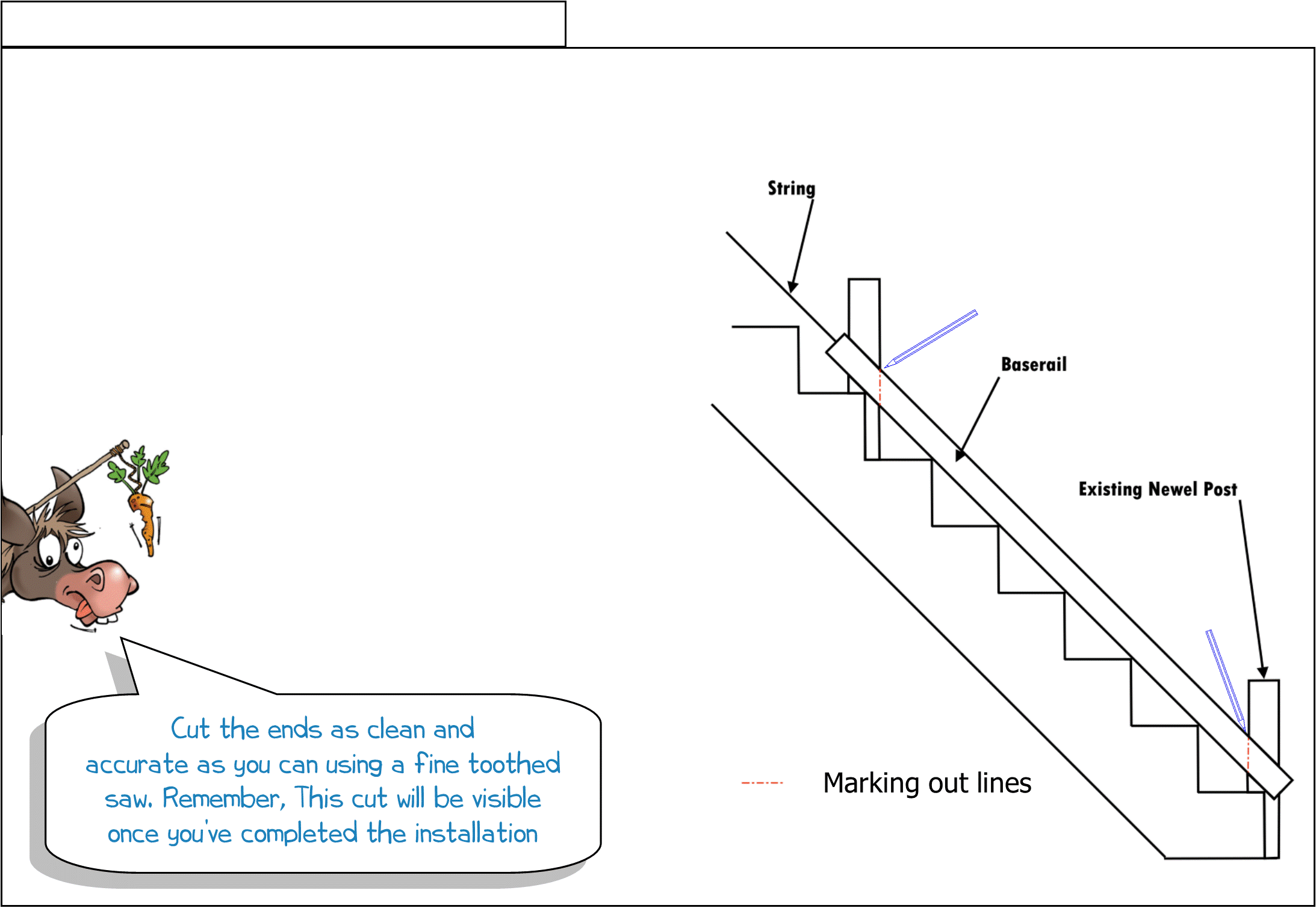
Step 13 - Mark & trim baserail
Lay the baserail on top of the stair nosing and against the sides of the newel bases.
Mark a vertical line following the inside face edge of each newel base.
Continue this line around the baserail to guide you when cutting.
Remove and using a fine toothed handsaw, carefully cut the baserail to length. Ensure that it is a good fit when placed on the string between the newel bases.
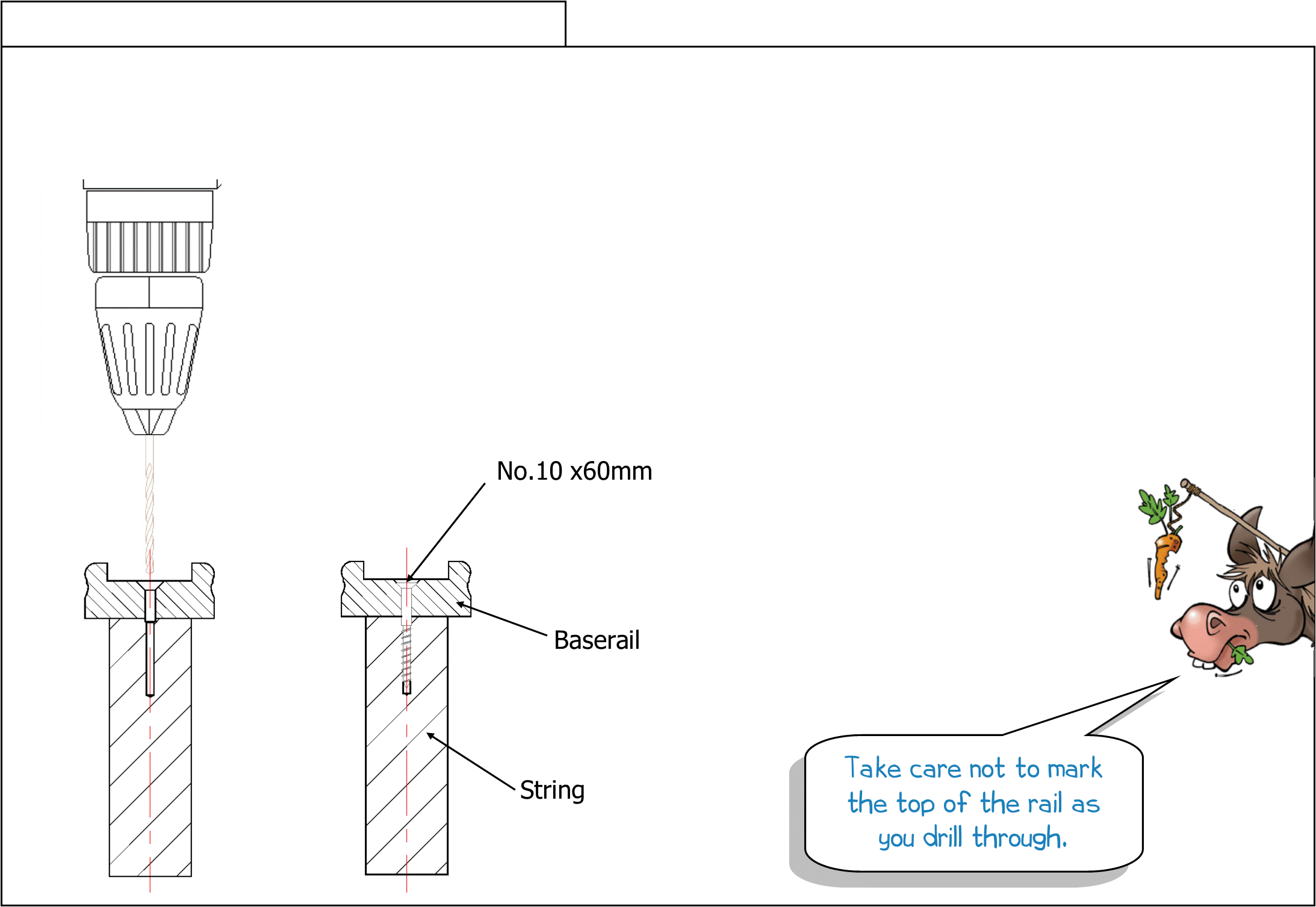
Step 14 - Drill & install baserail
Position the baserail between the newel bases, ensuring the rail is central to the newels, and drill 5.0mm clearance holes for the screws spaced every 300mm or so. Drill right through the baserail and slightly into the string to mark the fixing position, and countersink so that the head of the screw sits below the slot surface.
Remove the baserail and drill 3.3mm diameter pilot holes into the string where marked.
Ensure that all debris is cleared from the string and baserail.
Reposition the baserail and secure using No.10 x60mm screws.

Step 15 - Prepare newel base
Find the centre of the newel base by marking across the corners. Use a 50mm hole saw or good quality 50mm diameter Forstner bit to drill a hole 50mm diameter to accept the spigot on the end of the newel post. Then chamfer the corners of the post, sanding down to an acceptable finish.
Dry fit the newel into the newel base socket and ensure that it is vertical. Do not secure anything at this stage. Repeat for all other newels.

Step 16 - Fixing the handrail
Before marking and cutting your handrail, you will need to decide on which fixing method to use.
The handrail may be fixed to the newel post either by the traditional mortise and tenon joint or by utilising modern fixings.
The bolt fix method is ideal for those with little carpentry skills.
Either way, the handrail will need to be lifted into position, marked and cut to length.
Follow the next steps according to your fixing method















